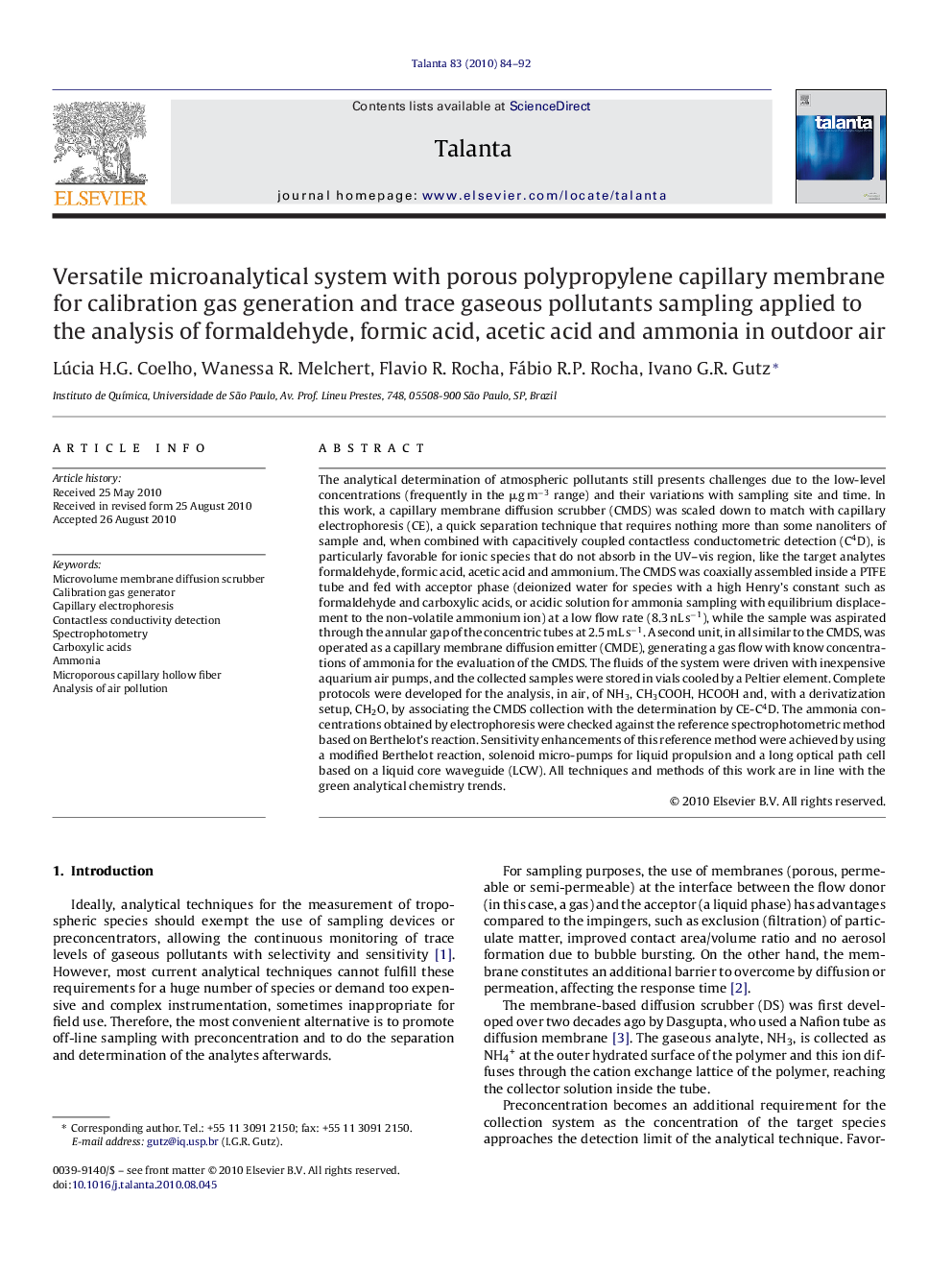| Article ID | Journal | Published Year | Pages | File Type |
|---|---|---|---|---|
| 1242465 | Talanta | 2010 | 9 Pages |
The analytical determination of atmospheric pollutants still presents challenges due to the low-level concentrations (frequently in the μg m−3 range) and their variations with sampling site and time. In this work, a capillary membrane diffusion scrubber (CMDS) was scaled down to match with capillary electrophoresis (CE), a quick separation technique that requires nothing more than some nanoliters of sample and, when combined with capacitively coupled contactless conductometric detection (C4D), is particularly favorable for ionic species that do not absorb in the UV–vis region, like the target analytes formaldehyde, formic acid, acetic acid and ammonium. The CMDS was coaxially assembled inside a PTFE tube and fed with acceptor phase (deionized water for species with a high Henry's constant such as formaldehyde and carboxylic acids, or acidic solution for ammonia sampling with equilibrium displacement to the non-volatile ammonium ion) at a low flow rate (8.3 nL s−1), while the sample was aspirated through the annular gap of the concentric tubes at 2.5 mL s−1. A second unit, in all similar to the CMDS, was operated as a capillary membrane diffusion emitter (CMDE), generating a gas flow with know concentrations of ammonia for the evaluation of the CMDS. The fluids of the system were driven with inexpensive aquarium air pumps, and the collected samples were stored in vials cooled by a Peltier element. Complete protocols were developed for the analysis, in air, of NH3, CH3COOH, HCOOH and, with a derivatization setup, CH2O, by associating the CMDS collection with the determination by CE-C4D. The ammonia concentrations obtained by electrophoresis were checked against the reference spectrophotometric method based on Berthelot's reaction. Sensitivity enhancements of this reference method were achieved by using a modified Berthelot reaction, solenoid micro-pumps for liquid propulsion and a long optical path cell based on a liquid core waveguide (LCW). All techniques and methods of this work are in line with the green analytical chemistry trends.
